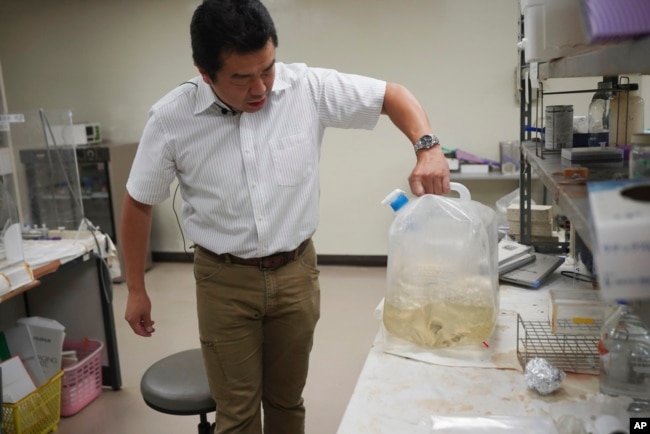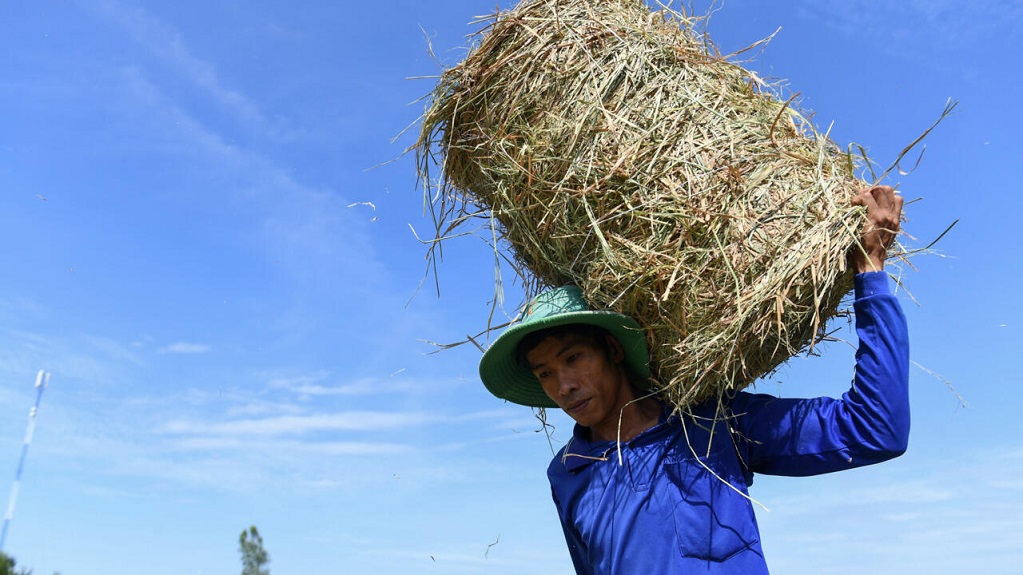Upcoming Water Release From Fukushima Nuclear Plant Raises Worries
Written by worldOneFm on July 24, 2023
IWAKI, JAPAN — Beach season has started across Japan, which means seafood for holiday makers and good times for business owners. But in Fukushima, that may end soon.
Within weeks, the tsunami-hit Fukushima Daiichi nuclear power plant is expected to start releasing treated radioactive wastewater into the sea, a highly contested plan still facing fierce protests in and outside Japan.
Residents worry that the water discharge, 12 years after the nuclear disaster, could deal another setback to Fukushima’s image and hurt their businesses and livelihoods.
“Without a healthy ocean, I cannot make a living,” said Yukinaga Suzuki, a 70-year-old innkeeper at Usuiso beach in Iwaki about 50 kilometers (30 miles) south of the plant. And the government has yet to announce when the water release will begin.
While officials say the possible impact would be limited to rumors, it’s not yet clear if it will be damaging to the local economy. Residents say they feel “shikataganai” — meaning helpless.
Suzuki has requested officials hold the plan at least until the swimming season ends in mid-August.
“If you ask me what I think about the water release, I’m against it. But there is nothing I can do to stop it as the government has one-sidedly crafted the plan and will release it anyway,” he said. “Releasing the water just as people are swimming at sea is totally out of line, even if there is no harm.”
The beach, he said, will be in the path of treated water traveling south on the Oyashio current from off the coast of Fukushima Daiichi. That’s where the cold Oyashio current meets the warm, northbound Kuroshio, making it a rich fishing ground.
The government and the plant’s operator, Tokyo Electric Power Company Holdings, or TEPCO, have struggled to manage the massive amount of contaminated water accumulating since the 2011 nuclear disaster, and announced plans to release it to the ocean during the summer.
They say the plan is to treat the water, dilute it with more than a hundred times the seawater and then release it into the Pacific Ocean through an undersea tunnel. Doing so, they said, is safer than national and international standards require.
Suzuki is among those who are not fully convinced by the government’s awareness campaign that critics say only highlights safety. “We don’t know if it’s safe yet,” Suzuki said. “We just can’t tell until much later.”
The Usuiso area used to have more than a dozen family-run inns before the disaster. Now, Suzuki’s half-century old Suzukame, which he inherited from his parents 30 years ago, is the only one still in business after surviving the tsunami. He heads a safety committee for the area and operates its only beach house.
Suzuki says his inn guests won’t mention the water issue if they cancel their reservations and he would only have to guess. “I serve fresh local fish to my guests, and the beach house is for visitors to rest and chill out. The ocean is the source of my livelihood.”
The March 11, 2011, earthquake and tsunami destroyed the Fukushima Daiichi plant’s cooling systems, causing three reactors to melt and contaminating their cooling water, which has since leaked continuously. The water is collected, filtered and stored in some 1,000 tanks, which will reach their capacity in early 2024.
The government and TEPCO say the water must be removed to make room for the plant’s decommissioning, and to prevent accidental leaks from the tanks because much of the water is still contaminated and needs retreatment.
Katsumasa Okawa, who runs a seafood business in Iwaki, says those tanks containing contaminated water bother him more than the treated water release. He wants to have them removed as soon as possible, especially after seeing “immense” tanks occupying much of the plant complex during his visit a few years ago.
An accidental leak would be “an ultimate strikeout. … It will cause actual damage, not reputation,” Okawa says. “I think the treated water release is unavoidable.” It’s eerie, he adds, to have to live near the damaged plant for decades.
Fukushima’s badly hit fisheries community, tourism and the economy are still recovering. The government has allocated 80 billion yen ($573 million) to support still-feeble fisheries and seafood processing and combat potential reputation damage from the water release.
Japanese fishing organizations strongly opposed Fukushima’s water release, as they worry about further damage to the reputation of their seafood as they struggle to recover. Groups in South Korea and China have also raised concerns, turning it into a political and diplomatic issue. Hong Kong has vowed to ban the import of aquatic products from Fukushima and other Japanese prefectures if Tokyo discharges treated radioactive wastewater into the sea.
China plans to step up import restrictions and Hong Kong restaurants began switching menus to exclude Japanese seafood.
Japan sought support from the International Atomic Energy Agency for transparency and credibility. IAEA’s final report, released this month and handed directly to Prime Minister Fumio Kishida, concluded that the method meets international standards and its environmental and health impacts would be negligible. IAEA Director General Rafael Grossi said radioactivity in the water would be almost undetectable and there is no cross-border impact.
Scientists generally agree that environmental impact from the treated water would be negligible, but some call for more attention on dozens of low-dose radionuclides that remain in the water, saying data on their long-term effect on the environment and marine life is insufficient.










